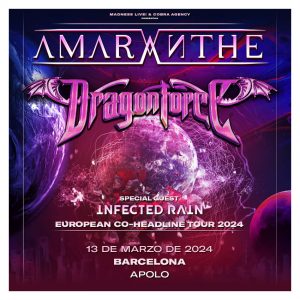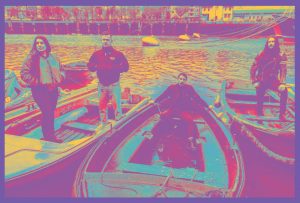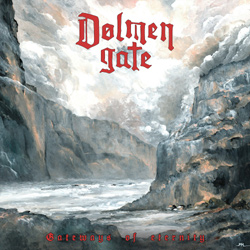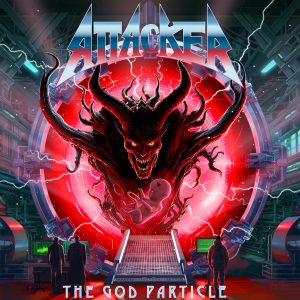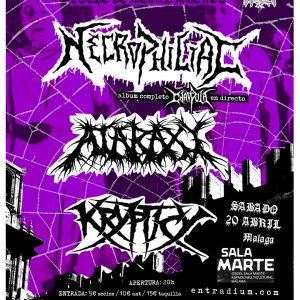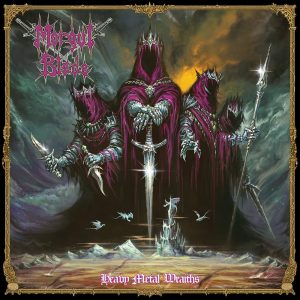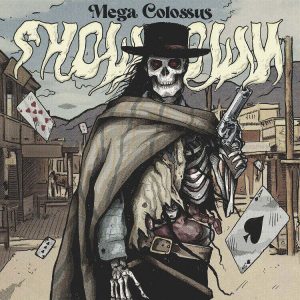HORNED ALMIGHTY (EN)
-Hello and first of all, thanks for taking your time to answer our questions. Your new album came out earlier this year, how are you feeling about it? Has it turned out as expected?
S: Ave! In retrospect, there’s always a thing or two you’d wish were done differently after listening to it closely several times. These are small imperfections, which are only audible to our own ears and has no effect on the general result. We are quite satisfied with the outcome, especially the production which has been perfected. It has elevated the ground work to new levels, mainly due to the choice of producer. Quentin Nicollet is a former member of Horned Almighty and understands our intentions and ideas better than anybody else. It was the perfect match. Releasing an album is always the culmination of many hours of work, finally embodied and manifested into an entity of it’s own. This is a huge fulfillment in itself!
-Have been 6 years since your previous album came out. The longest gap between any of your records so far. How was the process of creating the album? Did it develop itself? Was it a ritualistic kind of process? Do you need to take some time and breath to take distance? Tell us how was «To Fathom the Master’s Grand Design» built.
S: “Long is the way and hard, that out of Hell leads up to light” (John Milton) is a quote that accompanies the process of the new album very well! Many obstacles occurred along the way which needed attention, mostly in our personal lives. They slowed down or stopped the process of writing music entirely and often we had to start all over again, because the original ideas for the songwriting were lost. The absence was never intentional, life just came in the way. It wasn’t until a year or so before the recording, we could actual envision the entire album as a whole.
The concept, however, was conceived shortly after the release of “World of Tombs” and was a personal crusade of mine to pursue. The amount of time spent on researching the historical themes and writing the lyrics were quite consuming and became almost cathartic when finally completed. There has been a natural gap from the recording and up until now, with several live ceremonies in between. The first steps towards writing new material has begun and it is our intention to work in another pace this time, although unknown variables have been known to emerge unexpectedly…
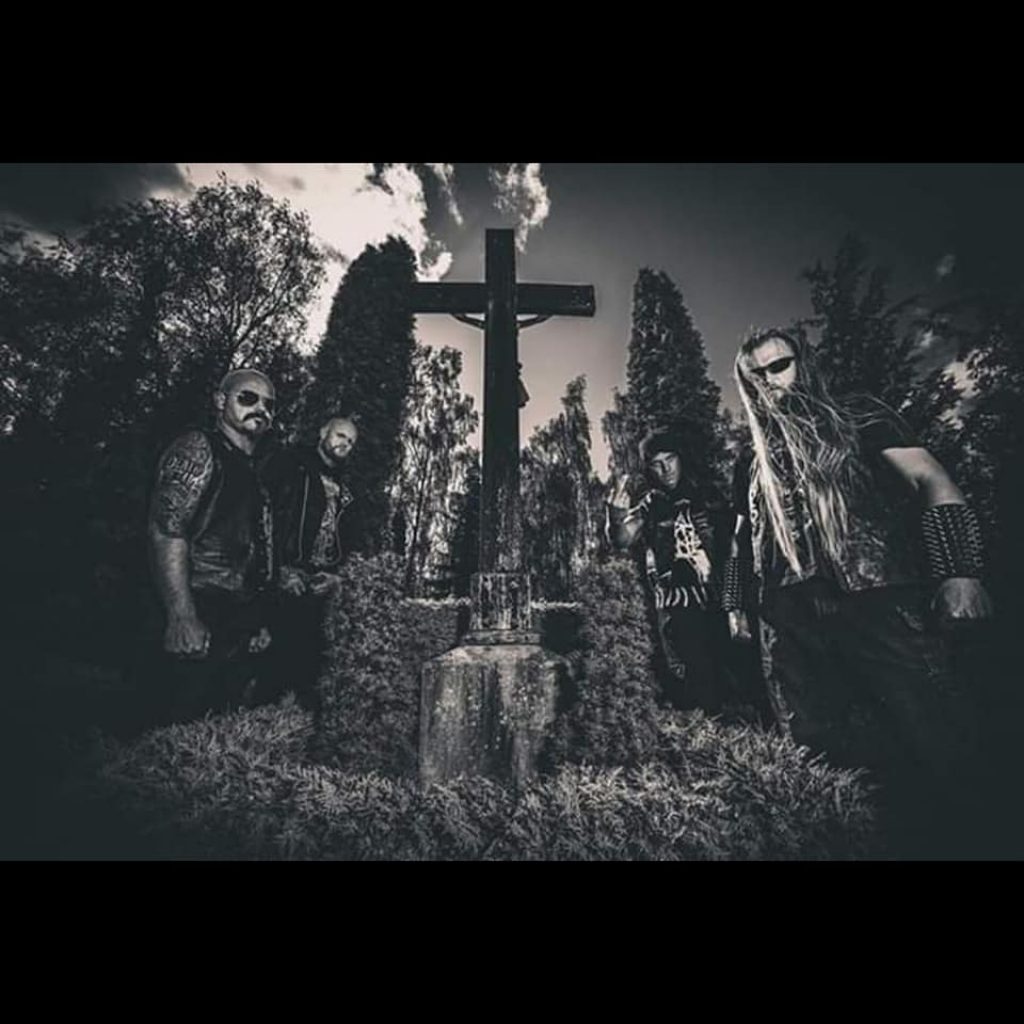
-Lyrical themes aside, can the album’s title be applied to how was the creative process like somehow? Or to how the listener should experience it?
S: The title was decided as soon as the concept took shape. But yes, there are similarities with the title and the writing process, although unintentionally. When the writings began, the concept was merely a thesis of my own, but as the material grew, so did our perception of the entire album. As in all processes, it’s a question of grasping what it is to be achieved. Without a deliberate goal, you stumble in darkness without a beacon. We managed to steer through the obstacles and reached enlightenment.
-This record contains longer songs, more complex even, and you also play around with some new sounds. Why did you feel it was the proper time to broaden your limits? And what new techniques do you use?
Hellpig: The broadening of our sound became a necessary step very early in the process, to keep it interesting for ourselves. A lot of the early songwriting for the album was actually based on an old tape of formerly dismissed riffs from around 2012 that, at that point in time, didn’t feel right for the “World of Tombs” album, because it felt “too different” at the time. Actually, the oldest riff on the album is the opening riff on “Antagonism Eternal” which was written in early 2011 just after “Necro Spirituals” was released. Point being, that being more open to broaden the sound of the new album, gave us a good head start by being open to re-visit a bunch of really cool unused riffs. The first song finalized for the album -“Swallowed by the earth” which is also the most “progressive” and longest song- really set the baseline for the songwriting to come, and that is definitely audible on quite a few of the tunes with more unorthodox arrangements.
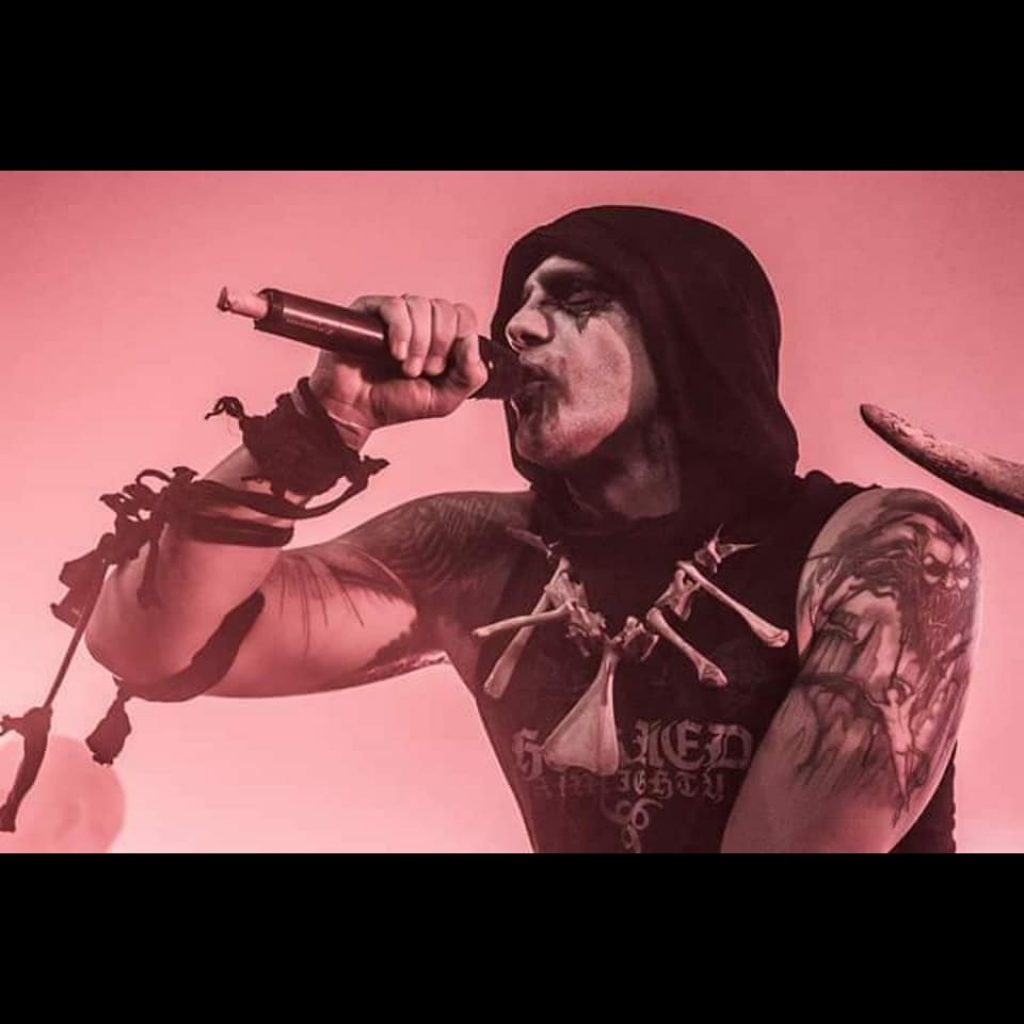
-Even though you try new things here, your music is founded on a 80’s-90’s basis. Do you work in accordance to these old school roots when it comes to recording and production?
S: Our influences are still mainly based on music from this period, it is fundamental for our existence. We grew up then and it is what laid the foundation for Horned Almighty. Primitive at first, later expanding our sound to not only being black metal. Our preferred method of recording is in and out as fast as possible – we do not dwell with each small detail. Our style represents fury and aggressivity, which demands a certain amount of spontaneity and this is not achieved by recording over and over again. Whether this is considered old school, I don’t know, but it is what works for us. The production on the other hand is not a return to the classics. For quite a while we have had our trademark sound and this time, we have tried to open it up and broaden the soundscape. The result is massive and crushing, but fresh and quite clear.
-The rhythmic base on the album is very powerful, with a very prominent bass sound providing an overall thick sound. How do you approach the bass lines?
Hellpig: We approach the bass on equal terms as the guitar, which means that we try to use the single guitar along with the bass as we would two guitars. eg. for harmonic and rhythmic purposes. This approach really started to be prominent around 2009 when we were reduced to a 4-piece. The need to transfer guitar lines to the bass to retain the harmonic depth of our songs, became necessary from a live performance perspective, and that approach crept into the songwriting as early as on “Necro Spirituals” from 2010. Since we write in the rehearsal space and not on a computer, we only have one guitar and bass to create harmonies, contrary to the possibilities of adding endless layers in a DAW which we would never be able to replicate live anyway. That writing approach might also be the reason that our music translates so well to the live scenario.
-The main lyrical theme on the album is violent and aggressive. Destructive. How do you picture it with sounds? How is the process of blending music and lyrics to create one whole thing?
S: When writing lyrics, the goal is to paint visual images for the listener with words. The same goes for the music, it is deliberately composed to give the listener a certain feeling when heard. Some lyrics call for doomy dark parts, while others need full blown destruction. These parts are arranged while rehearsing, discussing what would go well together. We have been working together for 25 years [Hellpig and me] and we have the same perspective. It is not necessary for him to read the lyrics, when composing and vice versa, I do not need the music to write lyrics. My themes are mostly of a violent nature, so Hellpig knows what to do ha ha!
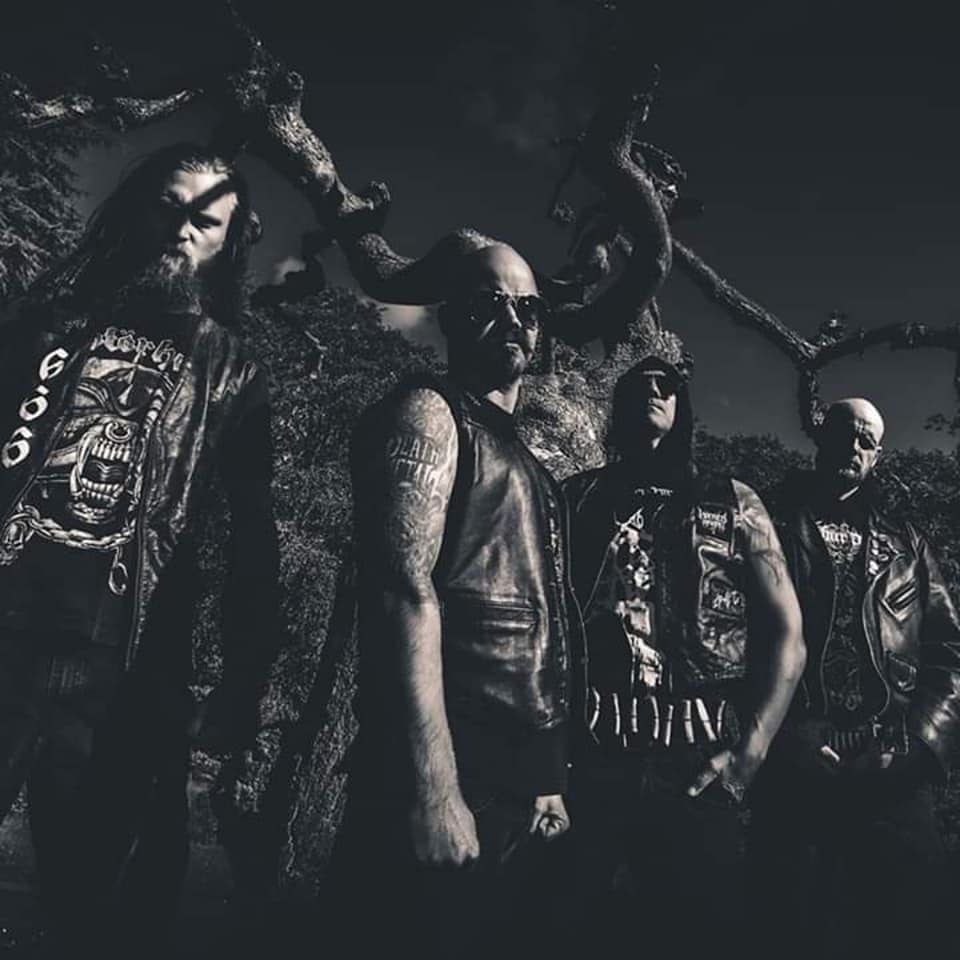
-Dwelling deeper into the lyrical themes, what’s this «grand design»? And who’s the master? A lot of deities have multiple faces, which are the ones of the Master in the album’s title?
S: The new album is a concept album of the destruction of man – History has proven that evil exists on many planes, from the forces of nature to the human psyche. The higher laws of nature are cruel and unrelenting, without sense or remorse, nor compassion for mankind. Each song is a historical manifest of the demise of man, resulting in a massive epitaph for humanity. Herein lies the answer of the grand design. The Master is multifaceted, be it death or deities, the devil or perhaps nature itself…
-What did inspire the concept of the album and what events do you cover here?
S: After reading about various historical events, the thesis of a higher force pursuing the extinction of mankind occurred. One of them the eruption of Mount Tambora in 1815, which led to a series of worldwide events, such as hunger, floods and drought, causing millions to succumb due to this particular event. I delved deeper into the matter and eventually this became the lyrical background for the song “Apocalyptic Wrath”. Inspired by the massive scale of this natural disaster, I started to explore other historical events resulting in the massive demise of people and came to the theory of a stronger force pursuing the destruction of man – either through the forces of nature or through the violent nature of mankind itself.
Another large event, which resulted in large scale casualties was the 2004 Indian Ocean tsunami and earthquake. After delving deeper into the subject, I realized the scale of mass destruction this phenomenon creates and this became the song “Devouring Armageddon”. The album also covers themes such as the black plague, aztec human sacrifices, war, earthquakes and witch hunts.
-It’s curious, you talk about historical events but the theme still resonate nowadays in our current world. Just take coronavirus as an example. It’s been centuries, millennias since some of the events you touch on the album, a lot of technological progress, and the human race is still as fragile. What reflections does the theme on this album make you come to?
S: The coronavirus is a perfect example, proving the thesis behind the concept. Modern technology developes cures for most life threatening diseases, but new ones still emerge, taking their toll on the population. The coronavirus isn’t even that effective though, compared to the regular flu. As I write this 3300 people have died from coronavirus worldwide – a study published by The Lancet in 2017 states that each year an estimated 290.000 to 650.000 people dies of seasonal flu!
We rely on modern technology to a point of false security and relatively simple diseases such as the flu and malaria kills thousands of people each year. Mankind strives to be superior, but fails. We are subjected to the same natural laws as the rest of all living organisms on this planet, no matter what technological progress we make.
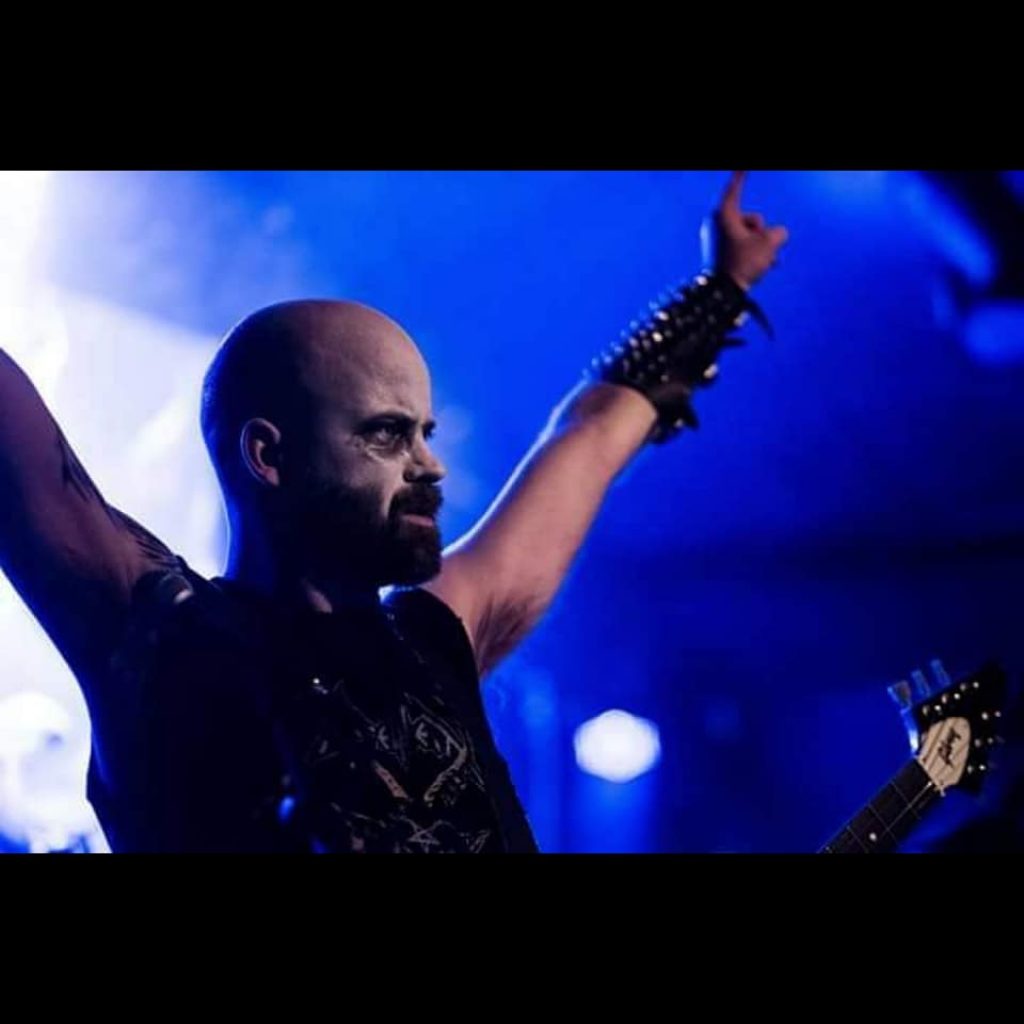
-Is real life evil (war, disease, natural disasters…) more inspiring and horrific than horror fiction? Does this real life, human evil comes from a Higher entity or energy?
S: Horrific: yes. Inspiring: at the moment yes. Murder, war, natural disasters, diseases, etc. bear witness of true evil, present here and now. Unlike evil associated with faith or deities, these are events causing the untimely demise of people everyday. The subject of horror fiction has been visited on our earlier works, but already on our third album “Contaminating The Divine” historical aspects inspired the lyrics. I read the «Malleus Maleficarum», which became the foundation for the album.
The thesis behind the album is a higher force pursuing the destruction of man. The origin behind are plenty, from the force of nature to divine intervention, depending on the recipient…
-This way, with this whole concept, you paint a landscape of chaos and destruction. Is it important for you to convey, not just a «message», but also to build a certain scenario? To create a specifical imagery?
S: Modern inventions have increased the survival rate and life expectancy for mankind and dangerous diseases, which earlier caused massive pandemics, are now treatable or exterminated. Mankind has expanded itself at a pestilent rate – it took over 200,000 years of human history for the world’s population to reach 1 billion, and only 200 years more to reach 7 billion, soon 8 billion! Mankind is it’s own worst enemy and I am merely pointing out the facts. Humanity is headed towards overpopulation, famine, war and mass destruction, which in the end would be the culmination of the grand design…
-All this about «To Fathom the Master’s Grand Design», being said; how could you describe it in just 3 words?
S: BLACK – DEATH – DOOM!
-And now, what are the near-future plans for the band?
S: We have some live rituals in the near future here in Denmark coming up. Hopefully some abroad will follow too. As mentioned earlier, the writing of new material has also begun, so hopefully it won’t be 6 years before our next release!
-That’s all from our side, thank you once more for answering to our interview. If you’d like to add some final words; it’s your turn.
S: Thanks for the interest and support! For a blackened experience of doom and gloom, check out “To Fathom The Master’s Grand Design”!
S. /HELLPIG, ANNO MMXX
Tania Giménez
tania@queensofsteel.com
